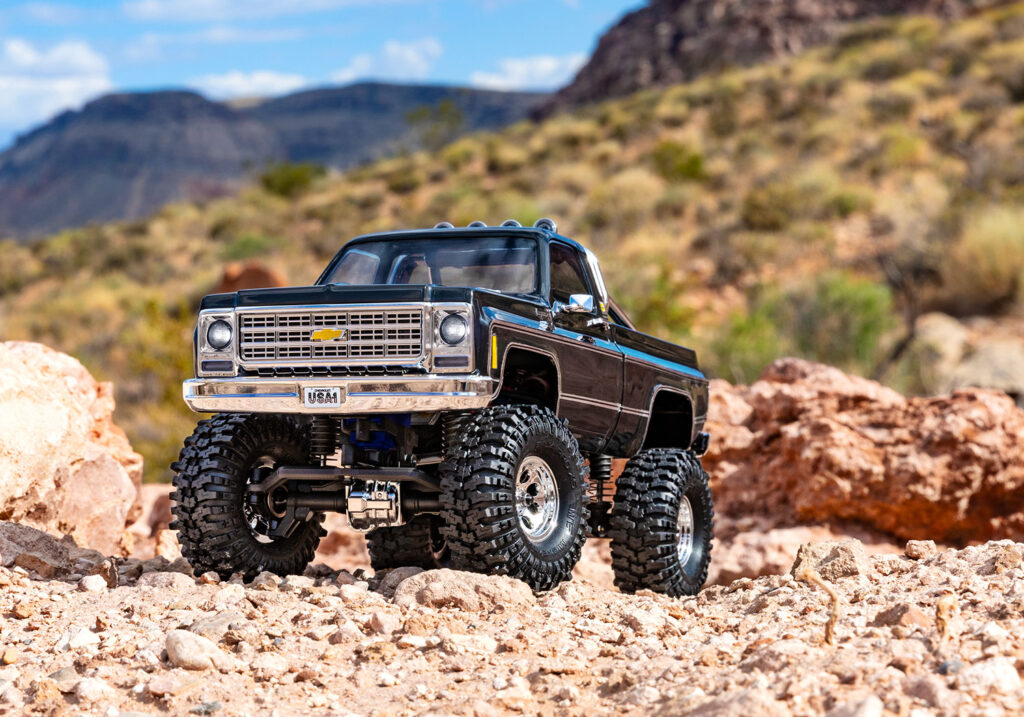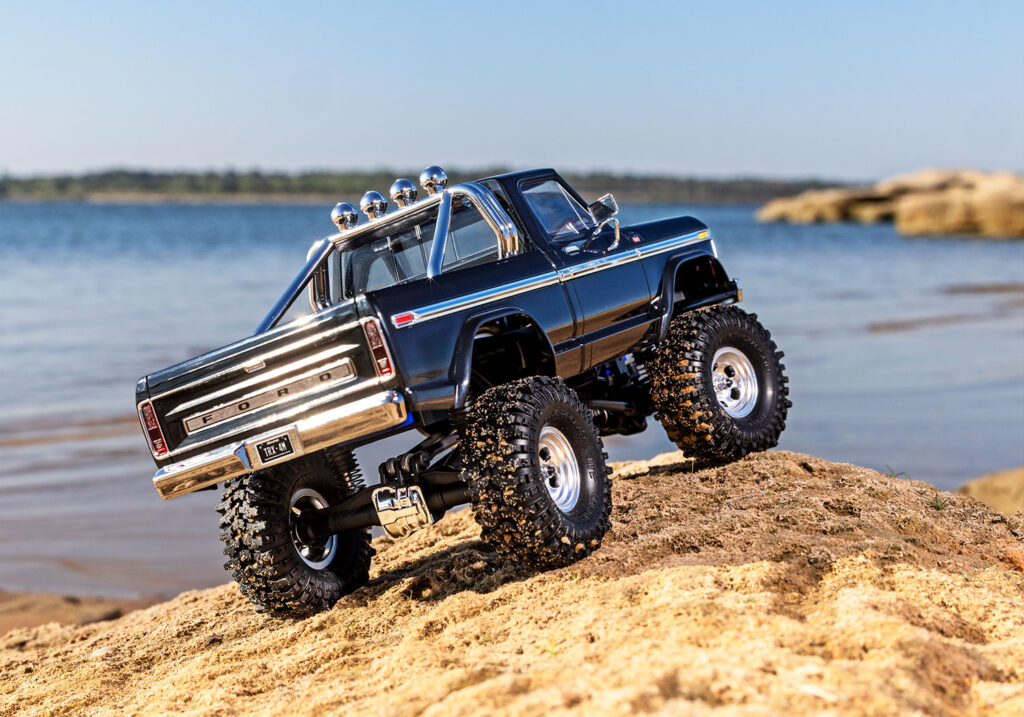The number of channels on a radio-controlled (RC) car determines how many different functions you can control. While basic RC cars may just have 2 channels for steering and throttle, advanced hobby-grade models can have 5, 6, or even more channels. But is more channels always better? There are trade-offs to consider. The channel count impacts complexity, cost, capabilities, and control. As a beginner, you may just need 2 or 3 channels to operate the basics. But RC enthusiasts seeking incredibly realistic experiences will desire maximum channels. When choosing an RC car, it’s important to understand the role of channels and select the right configuration based on your budget, skill level, and needs. In this guide, we will explore common channel setups, the benefits of more channels, key considerations for channel selection, and recommendations for beginners. By the end, you’ll know what channel count is right for your RC situation.
1. What Are Channels on an RC Car?
Channels refer to the different control signals that are transmitted from the controller to the receiver in the car. Each channel is sent over a specific frequency and controls one particular function.
Channel 1 – Steering
The first channel is typically assigned to control steering. The signals from the steering wheel on the transmitter get converted into left/right steering motions. The steering servo connected to this channel moves the front wheels accordingly.
Channel 2 – Throttle
The second channel is usually throttle control. Based on the throttle trigger position, it controls the speed and acceleration of the motor. Forward/reverse may also be controlled on this channel.
Channel 3 – Auxiliary Functions
On cars with 3 or more channels, the additional ones are used for auxiliary functions. Some common examples include:
- Controlling lights – With signals on this channel, headlights, brake lights, turn signals etc can be turned on/off.
- Sound effects – Horns, engine sounds and other audio effects can be triggered.
- Steering dual-rate – Allows switching between different steering sensitivity modes.
- Suspension – Lets you adjust ride height and stiffness.
So in summary, channels allow remote and independent control of all the various motors, servos and electronics in your RC car. More channels just means you can add and control more cool capabilities!

2. Why Channel Count Matters
Having more channels allows you to add more capabilities and controls to your RC car. With just 1 or 2 channels, you may only be able to control basic functions like speed and steering. More channels let you control other things like lights, sound effects, suspension, and more. This allows you to customize your car more and have a more realistic driving experience.
3. Common Channel Configurations
RC cars come in a variety of channel configurations, from simple 2-channel toy models to complex professional racers with 5+ channels. The number of channels affects how many different functions can be independently controlled.
2-Channel Cars
The most basic RC car models come with just 2 channels. One channel controls steering, moving the front wheels left or right. The other channel controls a motor for forward/reverse movement. With just these 2 channels, control is limited to basic driving.
3-Channel Cars
A third channel adds throttle control, allowing variable speed instead of just fixed forward/reverse. Now the car can accelerate, decelerate, and brake smoothly. This makes the car feel more realistic and responsive.
4-Channel Cars
4-channel adds a second set of steering servos, giving more precise control. The front and rear axles can be steered independently for tighter turns. Stability is improved at high speeds. With 4 channels, control starts to get more advanced.
5+ Channel Cars
As you go above 4 channels, even more options open up. Additional channels may control lights, sounds, gyro stabilization, suspension, dual-rate steering, winches, and various other auxiliary functions. This allows for incredibly realistic operation. But the more channels, the more complex controls get.
So in summary, channel count progresses from basic to advanced, providing more customizable control over how your RC car drives and functions. Consider what features you want when deciding how many channels your car needs.

4. Benefits of More Channels
Having an RC car with more channels provides several advantages:
More Realistic Driving Experience
Additional channels allow you to add features that make your RC car drive and feel closer to a real car. You can have independent control of throttle and braking for smoother acceleration and deceleration. A multi-channel steering system provides tighter, more responsive turning. Suspension adjustment gives a more realistic ride feel.
Greater Customization & Personalization
More channels means you can customize your car with various lights, sounds, and other effects to your personal taste. With just 2 channels, customization is very limited. But with 6+ channels, you can truly make your RC car unique.
Enhanced Performance & Handling
The dual steering servos and gyro stabilization possible with extra channels helps improve high-speed stability and handling. Advanced suspension adjustment allows tuning the ride height, stiffness, and balance to optimize traction and control for different terrains.
Additional Capabilities
Additional capabilities that can be added via more channels include winches, mechanical arms/cranes, instrument/gauges, and camera tilt/pan for first-person-view (FPV) RC driving. The possibilities expand as channel count increases.
So in short, more channels directly translates to greater functionality, more customization, and an overall heightened sense of realism and performance. It opens up what’s possible with your RC car.
5. Considerations When Choosing Channels
There are a few important factors to think about when deciding how many channels your RC car should have:
Budget
More channels means a more complex and expensive RC car. The electronics to support additional channels add cost. For example, a basic 2-channel RC car may be under $50, while pro 4+ channel models could be over $500. Set a budget that aligns with the channel features you want.
Intended Use
Consider how you plan to drive and use your RC car. Will it be high-speed racing, trail driving, or casual backyard play? High-performance racing requires 4+ channels, while basic play needs just 2-3. Match the channel count to your needs.
Skill Level
Beginners should start with fewer channels to get used to basic controls before advancing to more complex configurations. Expert hobbyists will desire maximum channels for full functionality. Assess your skill first.
Compatibility
The transmitter and receiver must support the same number of channels to work together. So the transmitter you have may dictate how many channels are compatible. Check compatibility before purchasing a car.
In summary, factors like budget, intended use, skill level, and electronics compatibility should all weigh into your decision when choosing the ideal channel configuration for your RC car. Consider both your needs and constraints.

6. Recommendations for Beginners
When starting out in the hobby of RC cars, it is advisable for beginners to start small with just 2 or 3 channels and simpler models. This allows you to learn the basics of controlling an RC car at a more manageable level before graduating to more advanced configurations.
Learn at a Slow Pace
The most important recommendation is to take it slow and easy as you are learning. Don’t try to take on too much too fast. Start with the basics and master them before moving to more complex controls. Rushing into an advanced model as a beginner will only lead to frustration.
Focus on Controlling Steering First
With an initial 2-channel car, spend time getting used to controlling the steering smoothly. Practice driving in large circles and curves in an open area. Develop coordination between the transmitter controls and the car’s movements.
Then Add Throttle Control
Once steering control feels comfortable, move up to a 3-channel car to start learning throttle usage. Go slowly when using the throttle trigger to avoid sudden acceleration. Get used to smooth starts, stops, acceleration and braking.
Upgrade Equipment Over Time
As your experience grows, you can gradually upgrade to models with more channels and capabilities. But only advance your equipment in line with your skill level. The goal is to progress steadily without big difficulty jumps.
The key for RC beginners is taking a slow, measured approach when starting out. Limit yourself to 2-3 channel cars, master the basics, and upgrade slowly over time. This will provide the best learning experience.
Final Thoughts
When selecting an RC car, one of the most important decisions is choosing the number of channels it has. More channels allow you to add more controls and realistic features, providing a heightened driving experience. But channels also increase complexity and cost. Beginners should start with just 2-3 channels to master the basics, then progressively upgrade to more advanced configurations. Consider your budget, experience level, and intended use, then choose the channel count that fits both your current skill and future aspirations. Advanced channels provide amazing control, but also require practice to handle. With the right channel configuration matched to your abilities, your RC car journey will be optimized for maximum fun.
Enjoyed this guide of how many channels for RC car? Then be sure to check out our other RC Rating guides.